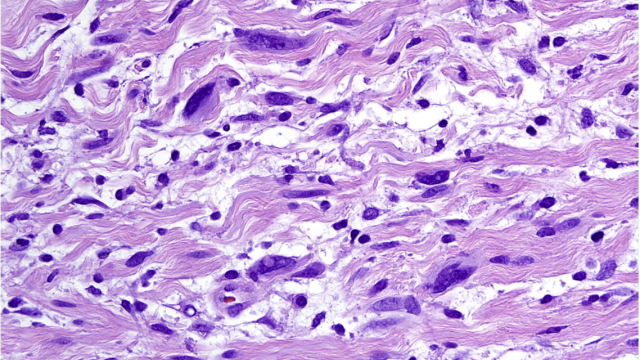Nearly one-third of patients diagnosed with cancer have a rare tumor. New research into the subject will lead to much-needed treatments for patients with rare tumors and shed light on how to treat subsets of more common cancers.

Kristy and her daughter, Jane, regularly visit the NIH Clinical Center for Jane’s participation in a CCR clinical trial for neurofibromatosis type 1,
a rare condition that increases the risk of developing a variety of benign and malignant tumors.
Credit: Brooke Bready, NIH Clinical Center
In the United States, cancers that affect fewer than 40,000 new patients per year are considered rare. Taken alone, each type occurs relatively infrequently, but collectively, rare tumors are not rare at all. In fact, nearly one-third of patients diagnosed with cancer have a rare tumor type. The systematic study of rare tumors will lead to much needed ways to treat patients’ tumors and will shed light on how to successfully treat subsets of other more frequently diagnosed cancers.
A major promise of research into rare tumors is that they may expose cancer mechanisms that also exist—but can be difficult to uncover—in subsets of more common tumor types from unexpected drivers of cancerous growth to molecular changes that underlie treatment resistance.
For example, metabolic enzymes called isocitrate dehydrogenases (IDH) were first linked to cancer when mutations in the genes encoding these enzymes were found in rare brain cancers such as glioblastoma. IDH mutations have since been linked to a range of other cancers, including 10 percent of cases of acute myelogenous leukemia, a blood cancer. This discovery in a rare brain tumor advanced the understanding of how changes in cellular metabolism impacts growth regulation and suggested new strategies for targeted therapy for other subsets of more common cancers.
CCR’s ability to focus on unmet needs, its stable, long-term funding and access to the NIH Clinical Center, the world’s largest research hospital, allows CCR scientists the unique ability to study rare tumors. Patients with rare tumors come to the Clinical Center from around the world, making it possible to identify new research opportunities and evaluate potential therapies in clinical trials large enough to yield meaningful results. Basic, translational and clinical research capabilities and mechanisms allow CCR to collaborate nimbly with commercial partners. This uniquely positions CCR to help bring new treatments for rare cancers from the lab to the patient.
There are other major opportunities in the study of rare tumors. Each case of a common cancer is often very heterogeneous. They may be caused by a wide variety of mutations and driven by different biological pathways in individual patients. In contrast, rare tumors are often more uniform, making it easier to identify the most relevant molecular pathways that either caused or sustain the cancer.
As our understanding of cancer advances, it is becoming evident that even commonly diagnosed cancers can be broken down into multiple subsets, each with their own clinical and biological features. Recognizing these subtypes and understanding their unique behavior will be critical for developing personalized approaches to cancer treatment. Rare tumor research can help, as many of these subsets of common cancers have molecular findings seen in rare cancers.
A different approach to studying rare cancers is to examine the tumors of patients who respond well to treatments that have not been effective for most people. Studying these individuals, known as extraordinary responders, may illuminate biological or lifestyle factors that predict patients’ responses to particular treatments.
The primary goal of research on rare tumors—from clinical studies of how rare tumors develop and progress to deep investigations of the biological factors that drive them—will always focus on discovering better treatments to improve outcomes for patients affected by these diseases.
Focused research on these rare diseases will have a far-reaching impact and affect many, leading to breakthroughs in treatment approaches that will improve outcomes for patients with both rare and common forms of cancer.


